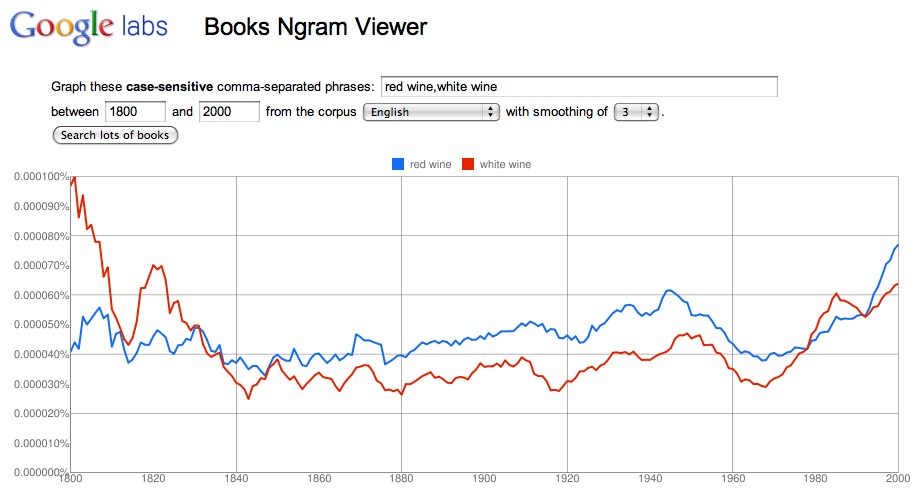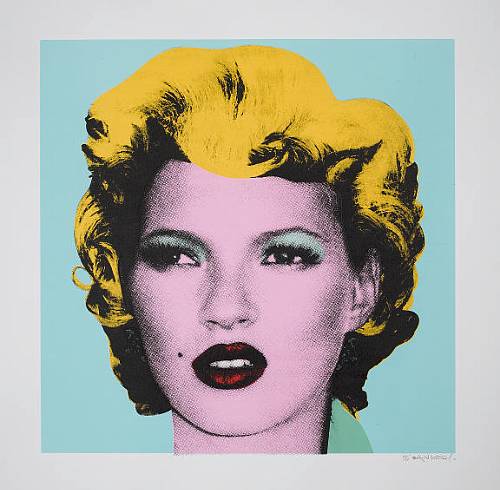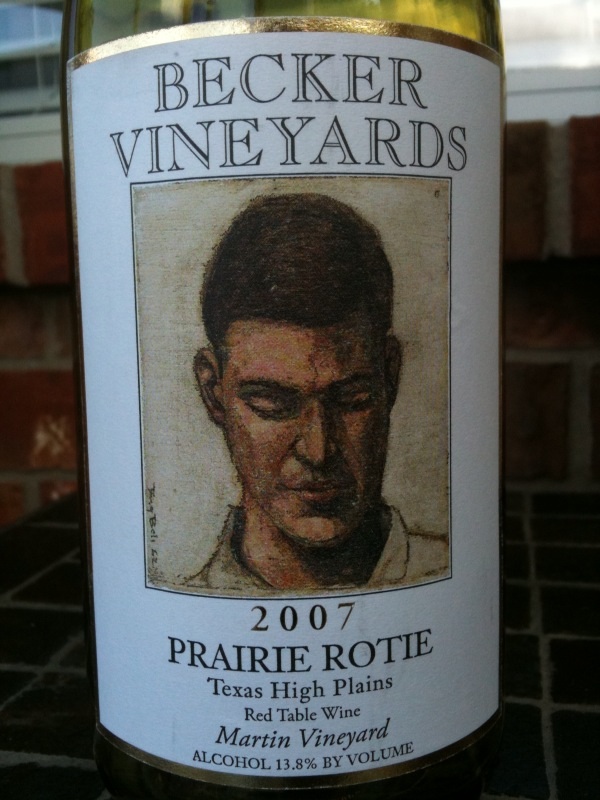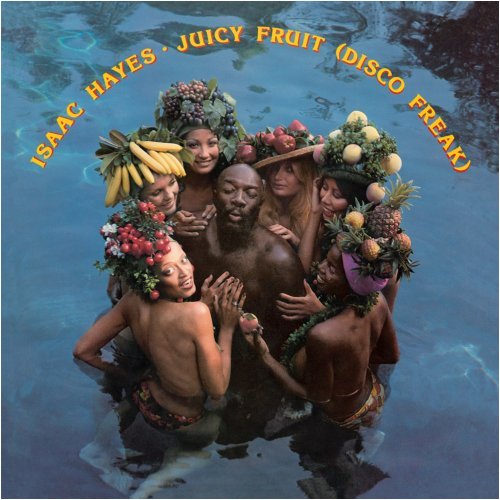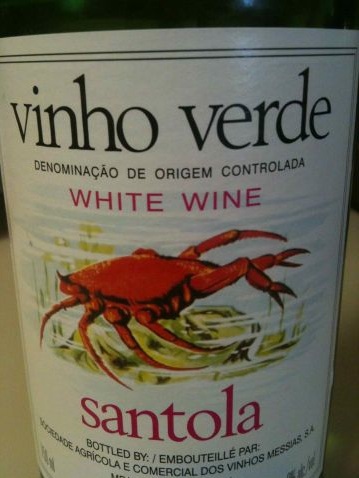Google Books Ngram Viewer allows you to run graphs of how often different words or phrases have occurred in a corpus of books over a selected span of years. What does one do with such a powerful tool? Play around with wine words of course! Check out balance of power between “red wine” and “white wine” below. (What happened in the 1980s?)
All posts by Jim/VINEgeek
Anybody Home?
Amigos:
My non-blogging life has been quite busy lately and I haven’t been able to keep up with posts. So I’ve been on informal hiatus. But I will be back and better than ever in a few weeks.
Gracias,
Your friendly neighborhood VINEgeek
Mourvèdre Monday #24: Castaño Hecula 2005
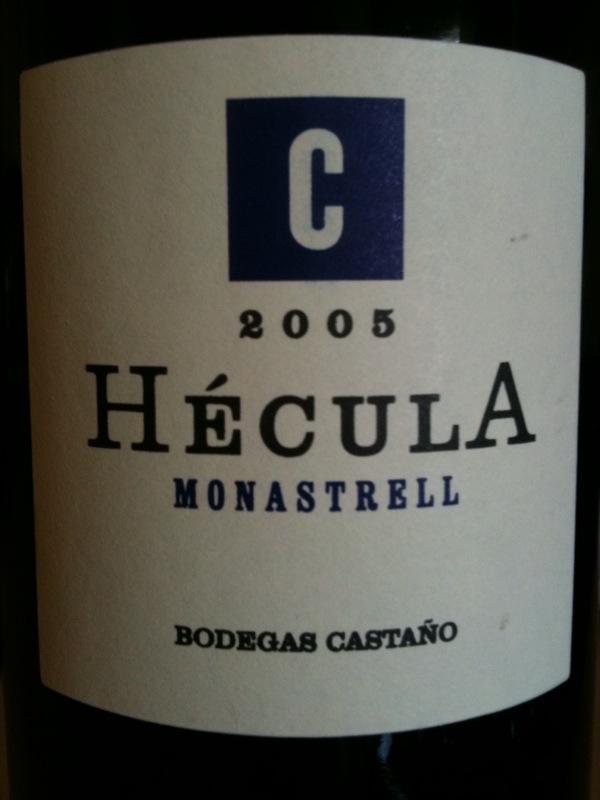 Back to Spain for Mourvèdre Monday. This one’s from Bodegas Castaño, one of the biggest producers of Monastrell in Yecla, in southeastern Spain. This wine got 90+ points from Parker for 5 straight vintages, including this one. Let’s see what’s up.
Back to Spain for Mourvèdre Monday. This one’s from Bodegas Castaño, one of the biggest producers of Monastrell in Yecla, in southeastern Spain. This wine got 90+ points from Parker for 5 straight vintages, including this one. Let’s see what’s up.
Producer: Bodegas Castaño
Grapes: 100% Monastrell
Appellation: Yecla
Vineyards: From 30+ year old vines in two vineyards: Las Gruesas and Pozuelo. Both with soils of sand, clay and limestone.
Vintage: 2005
Winemaking: 6 months of aging. It’s not clear from tech sheet in what vessel, but I would guess tank or neutral oak.
Alcohol: 14.5%
Price: Around $12
Tasting notes: Dusty fruit on the nose playing second fiddle to dried flowers and a sweaty, meaty aroma. I catch a fleeting licorice note as well. On the palate there are rich blackberry and red fruit flavors with an interesting mossy background note. Finishes short and dry with a little heat.
Overall impression: Some intriguing elements that don’t quite come together into a harmonious whole as well as I would like. Still an nice bottle that I enjoyed spending the evening with. And a nice value at around $12. B
Free association:
More info:
90 points from Parker and Tanzer. Parker gave this wine 90 or 91 points in vintages 2002-2006.
Jeff over at Viva La Wino reviewed this one last year and loved it.
Mourvèdre Monday #23: Becker Vineyards Prairie Rotie 2007
Mourvèdre Monday finally makes it to Texas. Becker is a big name in the Texas wine scene. I’ve tried quite a few of their wines over the years with mixed results. I had high hopes for their “Prairie Rotie” — a Southern Rhône blend of Mourvèdre, Grenache, Syrah and Carignan (though the name is a play on Côte Rôtie, which is a Northern Rhône appellation where the wines are either all Syrah or Syrah + Viognier). Let’s check it out.
Producer: Becker Vineyards,whose winery and tasting room are in the Texas Hill Country near Fredericksburg
Grapes: 68% Mourvèdre, 14% Grenache, 12% Syrah, 6% Carignan
Appellation: Texas High Plains AVA – way up in the panhandle
Vineyard: Martin Vineyard
Vintage: 2007
Winemaking: This wine spent 9 months in new American oak barrels.
Alcohol: 13.8%
Price: $16.95 on Becker’s website, but I believe I paid about a few dollars less at HEB (supermarket).
Tasting notes: This wine smells purple, grapey. Or like some imaginary Kool-aid flavor called Sparkleberry. Some sweet oak coming through pretty strong as well. Extracted, overripe berry fruit on the palate, coming across a little raw. The winery’s description promisingly mentions forest floor and herbs and coffee, but I didn’t pick up any of that in the wine. I grew bored of this very quickly.
Overall impression: A Texas winery taking pains to make and market this as a Rhône-style wine set my expectations to a way different place. I hope Becker (and others) continue working with these grapes here in Texas, but this particular wine didn’t do much for me. C
Free association:
Oddball Wine of the Week: Niellucciu
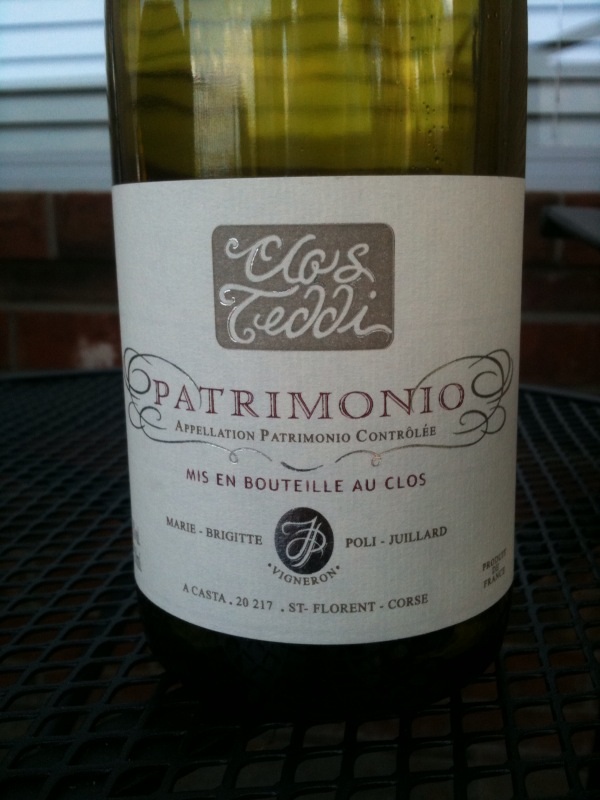 When I saw “Niellucciu” named as the grape on the back label — which looks to me more like a Scrabble rack than any grape variety I’d ever hear of — I bought first and asked questions later. Back home, Oz Clarke’s Grapes and Wines — a must-own book in my opinion — revealed to me that Niellucciu is a Corsican grape that’s identical to Sangiovese. Well, okay, so not a new grape to me. But French Sangiovese and the unusual synonym qualifies it for Oddball Wine of the Week. Let’s check it out.
When I saw “Niellucciu” named as the grape on the back label — which looks to me more like a Scrabble rack than any grape variety I’d ever hear of — I bought first and asked questions later. Back home, Oz Clarke’s Grapes and Wines — a must-own book in my opinion — revealed to me that Niellucciu is a Corsican grape that’s identical to Sangiovese. Well, okay, so not a new grape to me. But French Sangiovese and the unusual synonym qualifies it for Oddball Wine of the Week. Let’s check it out.
Clos Teddi 2006 Patrimonio
Producer: Clos Teddi
Grapes: 100% Niellucciu (Sangiovese) – hear it pronounced here
Appellation: Patrimonio (AOC, France) – the first AOC in Corsica
Vineyards: 25-35 year old vines in “granitique” sand in the Agriates desert. Farmed organically.
Vintage: 2006
Winemaking: 12 months in tank before bottling
Alcohol: 13%
Price: I paid $21.37 at Spec’s in Austin
Tasting notes: Starts with a stout Old World funk. Meaty. Savory. Sweaty. But with a very nice sweet strawberry note at the core. On the palate, it’s medium-bodied with more red fruit flavors and a tannic, plum skin note. Dry finish.
Overall impression: I enjoyed this quite a bit. That strawberry note on the nose really made this one for me. If you see it, give it a try. B
Free association:
Three Thoughts on the Latest Wine Spectator (Aug. 31, 2010)
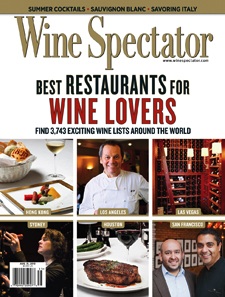 It’s the “Best Restaurants for Wine Lovers” issue with a directory of all their award winners. I don’t want to rehash the legitimate questions about the level of scrutiny (or lack thereof) applied to these awards. I just want to take them at face value and make some observations.
It’s the “Best Restaurants for Wine Lovers” issue with a directory of all their award winners. I don’t want to rehash the legitimate questions about the level of scrutiny (or lack thereof) applied to these awards. I just want to take them at face value and make some observations.
1. Apparently, you can’t have a best-of-the-best wine programs without strength in Bordeaux. Of the 75 Grand Award winners around the world — the three glass ratings — only one doesn’t have Bordeaux (or France, generally) among the “wine strengths” listed in it’s profile. The sole exception to the rule is Del Posto, whose strengths are listed as Italy and Champagne.
More intriguing to me are the “Best of Award of Excellence” winners (what an awkward name) — the two glass ratings — that have a more interesting or unexpected emphasis:
- Everest (Chicago): Alsace
- Salpicón (Chicago): a “comtemporary Mexican” restaurant with strengths in California, Spain, Austria and Italy.
- Lotus of Siam (Las Vegas): a Thai restaurant with strengths in Germany and France.
- Hearth (NYC): wine strengths listed as “International” – I can imagine the editor reviewing their geeky-cool list, throwing his/her hands up in dismay and saying let’s just call it “International”
- Telepan (NYC): wine strengths include the Loire, in addition to California, Italy and Burgundy.
- Bleeding Heart (London): a contemporary French restaurant with strength in New Zealand wines (and French)
- Deli Swiss (Dominican Republic): a “French/Caribbean” restaurant with wine strengths in Spain, France, Chile and Argentina
2. There are no two or three glass winners here in Austin, Texas. That means we’re trailing noted culinary hotspots like:
- Pittsboro, NC (Fearrington House Restaurant)
- Moose, WY (Dornan’s)
- Iowa City, IA (Chef’s Table)
- Shepardstown, WV (Bavarian Inn)
- Hattiesburg, MS (Crescent City Grill)
- Anchorage, AK (The Crow’s Nest and Marx Bros. Cafe)
3. Outside of the restaurant awards section, I was struck by this while flipping through the reviews of new releases… I really need to start paying more attention to Austrian wines. There are tons of Rieslings and Grüner Veltliners rated Outstanding (90-94) in the under $30 price range. Producers: Johann Donabaum, Knoll, Gritsch Mauritiushuf, Petra Unger, Rainer Wess.
Mourvèdre Monday #22: Domaine La Suffrène 2005 Bandol
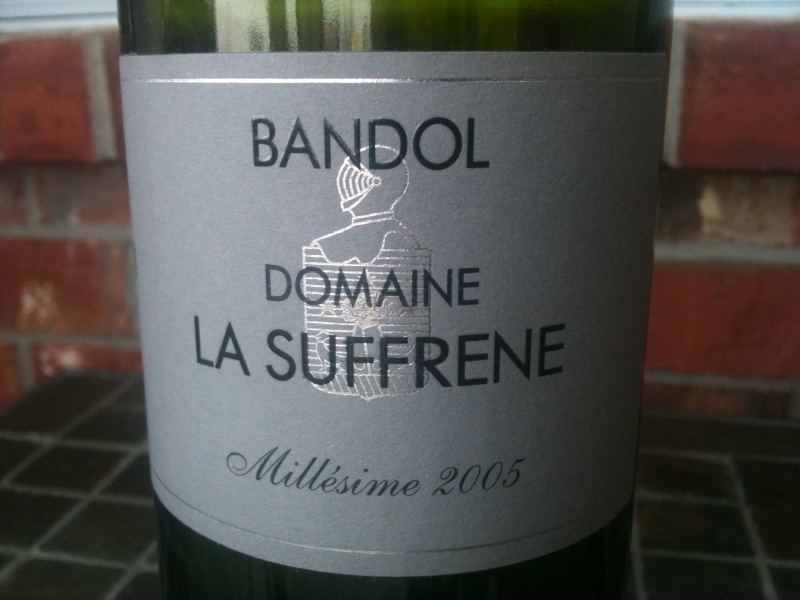 I’ve been meaning to devote more attention to Bandol in the Mourvèdre Monday series. Bandol, after all, is the only appellation in France where Mourvèdre is the top dog grape (it must be a minimum of 50% of the blend).
I’ve been meaning to devote more attention to Bandol in the Mourvèdre Monday series. Bandol, after all, is the only appellation in France where Mourvèdre is the top dog grape (it must be a minimum of 50% of the blend).
So I was very excited when I was recently followed on Twitter by @BandolWines and subsequently discovered that they’re a Bandol importer based in nearby Houston. Soon after we connected via Twitter, I got the chance to meet Amine Matta, who was pouring three wines from Domain La Suffrene at the Austin Wine Merchant: a fresh, crisp appley white (from Clairette and Ugni Blanc), a nice minerally rosé and the red reviewed below. (Tasting notes based on a full bottle I purchased and drank later.) I’m looking forward to tasting through the as much of their portfolio as I can eventually!
Domaine La Suffrène 2005 Bandol
Producer: Domaine La Suffrène
Grapes: 55% Mourvèdre, 20% Grenache, 15% Cinsault, 10% old-vine Carignan
Appellation: Bandol (AOC, France)
Vineyards: “sandy-silt-laden, calcareous and clay” soils
Vintage: 2005
Winemaking: 18 months in oak (% new unknown)
Alcohol: I failed to note it.
Price: I paid around $30 at Austin Wine Merchant
Tasting notes: On the nose, there is a spicy, black pepper layer on top of the red fruit (berries and maybe some plum). A definite whiff of horse stable on the nose, but a nice clean horse stable, like the ones with the clydesdales at Busch Gardens and SeaWorld. On the palate, it has good dark fruit, but it’s strength for me is in its leathery, savory, earthy qualities. A wine for contemplation, not quaffing.
Overall impression: A real winner for me. B+
Free association: I picture Dumbledore drinking this in his office after a long day battling office politics at Hogwarts.
Wegeler PURE Riesling 2006
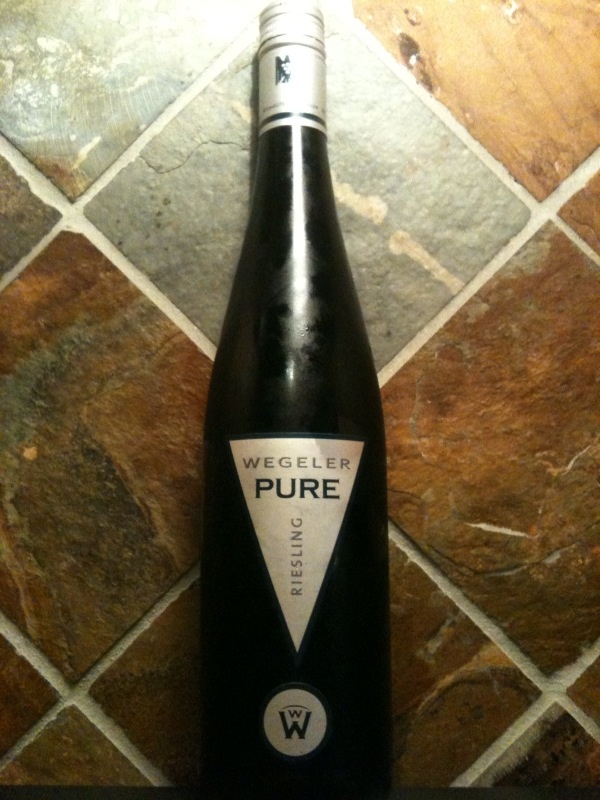 I’ve never really gotten in the habit of drinking much German wine. Partly because I’ve always drunk more red than white. And partly because of all the uncertainty around sweetness, especially in my early wine-drinking days when I turned my nose up at any hint of sweetness, thinking that made me more sophisticated. More than most categories, I feel like I need a guide when it comes to German wine, so I took a chance at this bottle, which came highly recommended from Garagiste.
I’ve never really gotten in the habit of drinking much German wine. Partly because I’ve always drunk more red than white. And partly because of all the uncertainty around sweetness, especially in my early wine-drinking days when I turned my nose up at any hint of sweetness, thinking that made me more sophisticated. More than most categories, I feel like I need a guide when it comes to German wine, so I took a chance at this bottle, which came highly recommended from Garagiste.
Producer: Wegeler
Grapes: 100% Riesling
Appellation: Rheingau (Germany)
Vineyards: Loess/loam and clay soils
Vintage: 2006, so it’s got a bit of bottle age on it.
Winemaking: no info
Alcohol: 11.0%
Price: I paid $11.99 via Garagiste, but this normally retails for around $20.
Tasting notes: Pale, brassy color. Pretty citrus and stone fruit aromas lead the way, accented with talc and gravel notes. There’s a little pineapple juice, too, and I keep thinking it’s reminding me of Juicy Fruit gum. Round fruit flavors with a touch of sweetness (medium-dry) on the palate, but with bright acidity that makes this very fresh, and dare I say, PURE. A little crushed rock shows as well for added interest. This wine was drinking well for several days after opening.
Overall impression: This is the Germans doing what they do. And I appreciate it. I bet you would to. B
Free association:
More info:
Imported by Rudi Wiest Selections.
10,000 cases produced.
A Quick Vinho Verde Free Association
Mourvèdre Monday #21: Cline Cashmere 2008
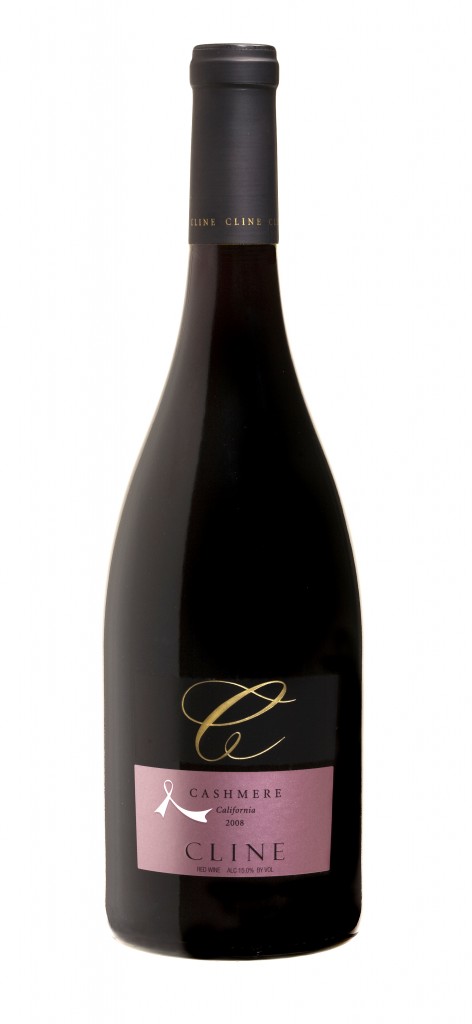 I always look forward to opening another bottle of wine from Cline Cellars. Cashmere is their GSM blend (Grenache, Syrah and Mourvèdre) and in their latest release – the 2008 – they’ve upped the share of Mourvèdre in the blend. Your favorite blogger’s favorite grape is now the lead dog at 44%. (Let’s all pretend they did that in response to the shear market-moving force of VINEgeek.com.)
I always look forward to opening another bottle of wine from Cline Cellars. Cashmere is their GSM blend (Grenache, Syrah and Mourvèdre) and in their latest release – the 2008 – they’ve upped the share of Mourvèdre in the blend. Your favorite blogger’s favorite grape is now the lead dog at 44%. (Let’s all pretend they did that in response to the shear market-moving force of VINEgeek.com.)
Producer: Cline Cellars
Grapes: 44% Mourvèdre, 35% Grenache, 21% Syrah
Appellation: California (AVA)
Vineyards: From the winery’s tech sheet…
“Contra Costa County provides the lion’s share of the grapes for this blend. Careful attention to the Massoni Grenache vineyard in Oakley involves cluster thinning and leaf pulling, which increases fruit concentration. Big Break Grenache is harvested from older lower yielding dry-farmed vines. The Oakley Syrah experiences warm days and cool nights. And the Mourvedre, planted in sand soil, is dry-farmed.”
Vintage: 2008
Winemaking: 9 months in dark toast French oak (25% new)
Alcohol: 15.0%
Price: Around $15
Tasting notes: I get raspberry cream and a bit of black pepper on the nose. The palate is blackberry pie filling, but with the polished mouthfeel I’ve come to expect from Cashmere (though not as luxuriously silky as the 2007). A brief bit of grip at the end that quickly morphs into a sweet, oaky finish. I don’t get the minty note I usually get in wines with fruit from Cline’s Big Break vineyard, which has eucalyptus trees adjacent to the vineyard.
Overall impression: Because of the increased presence of Mourvèdre in the blend, I wanted to like this even more than past vintages, but I have to say I liked the 2007 a bit more. But, the 2008 is another crowd-pleasing Cashmere from Cline. (Old-Worlders may want to pass) B
Free association:
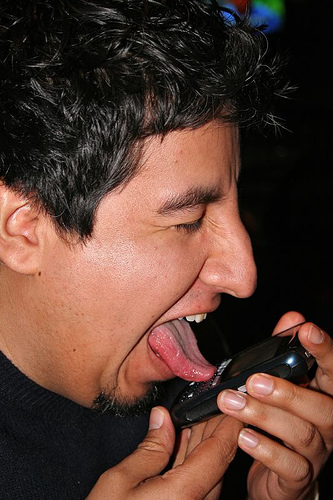
Image credit: 1sock via Flickr
More info:
Grape Stories/CellarTracker reviews (avg: 87 pts)
Cline donates a portion of the proceeds from every bottle of Cashmere sold to the Breast Cancer Network of Strength.
